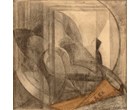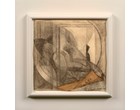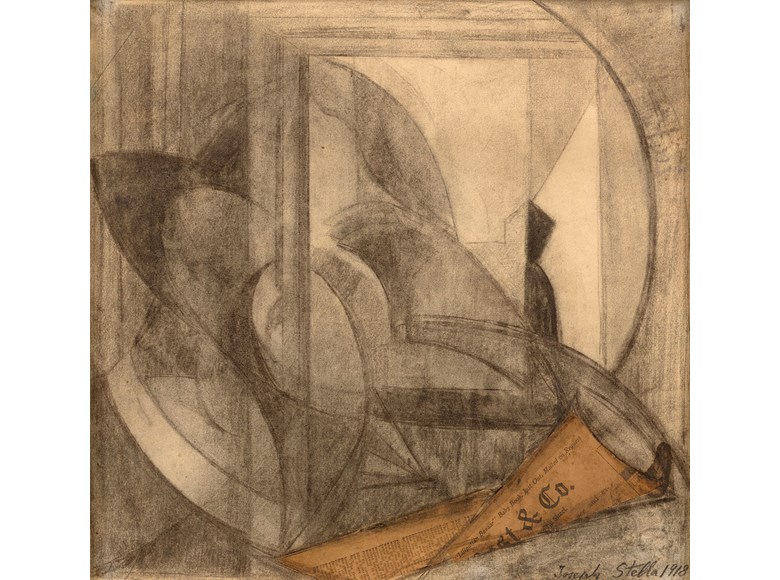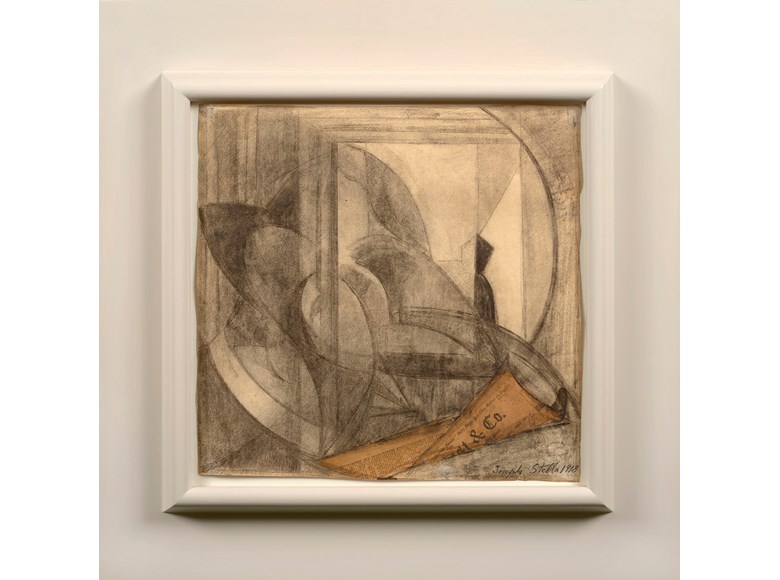 BACK TO GALLERY
BACK TO GALLERY
Avery Galleries
Joseph Stella
Man Reading a Newspaper
Signed and dated lower right: Joseph Stella 1918
15 1/4 x 15 3/4 inches (38.7 x 40 cm)
description
Joseph Stella’s artistic career defies easy categorization. He was simultaneously a modernist and traditionalist, a dual citizen of the Old and New World, a bold experimenter and masterful practitioner of time-honored artistic techniques. His iconic paintings of New York City, such as the Brooklyn Bridge and Coney Island, celebrate modernity and the Machine Age, while his exuberant paintings of the natural world speak to the spiritual revelation that guided and grounded him throughout his life.
Between 1915 and 1922, Stella participated in many of the key moments of the New York Dada movement. He began to create collages, using found materials that called into question the definition of art and the role of the artist in a Dadaist spirit. Some of his collages are more typically avant-garde. In this work from 1918 titled Man Reading a Newspaper, for example, he combined bits of urban detritus like newspaper fragments with drawn elements to suggest a modern scene.
However, Stella did not adopt the nihilistic attitudes that his Dadaist friends held. While Duchamp attempted to create work that appeared entirely impersonal, Stella continued to believe that art was fundamentally a vehicle for the creator's individual expression. He was not interested in being radical for the sake of being radical, as Duchamp was, but in expressing himself in the most authentic way possible. His work, therefore, was actually the antithesis of Dada.
Excerpted from "Joseph Stella's Visionary Materiality" by Ellen E. Roberts, pp. 36-37, in Stephanie Mayer Heydt, Audrey Lewis, and Thomas Padon, eds., Joseph Stella: Visionary Nature (New York: DelMonico Books, 2023).
Between 1915 and 1922, Stella participated in many of the key moments of the New York Dada movement. He began to create collages, using found materials that called into question the definition of art and the role of the artist in a Dadaist spirit. Some of his collages are more typically avant-garde. In this work from 1918 titled Man Reading a Newspaper, for example, he combined bits of urban detritus like newspaper fragments with drawn elements to suggest a modern scene.
However, Stella did not adopt the nihilistic attitudes that his Dadaist friends held. While Duchamp attempted to create work that appeared entirely impersonal, Stella continued to believe that art was fundamentally a vehicle for the creator's individual expression. He was not interested in being radical for the sake of being radical, as Duchamp was, but in expressing himself in the most authentic way possible. His work, therefore, was actually the antithesis of Dada.
Excerpted from "Joseph Stella's Visionary Materiality" by Ellen E. Roberts, pp. 36-37, in Stephanie Mayer Heydt, Audrey Lewis, and Thomas Padon, eds., Joseph Stella: Visionary Nature (New York: DelMonico Books, 2023).








 SEND AN EMAIL
SEND AN EMAIL
 (610) 896-0680
(610) 896-0680